If you want to add winter interest to your garden, one of the best ways to do it is to plant some beautiful winter-blooming perennials such as crocus flowers.
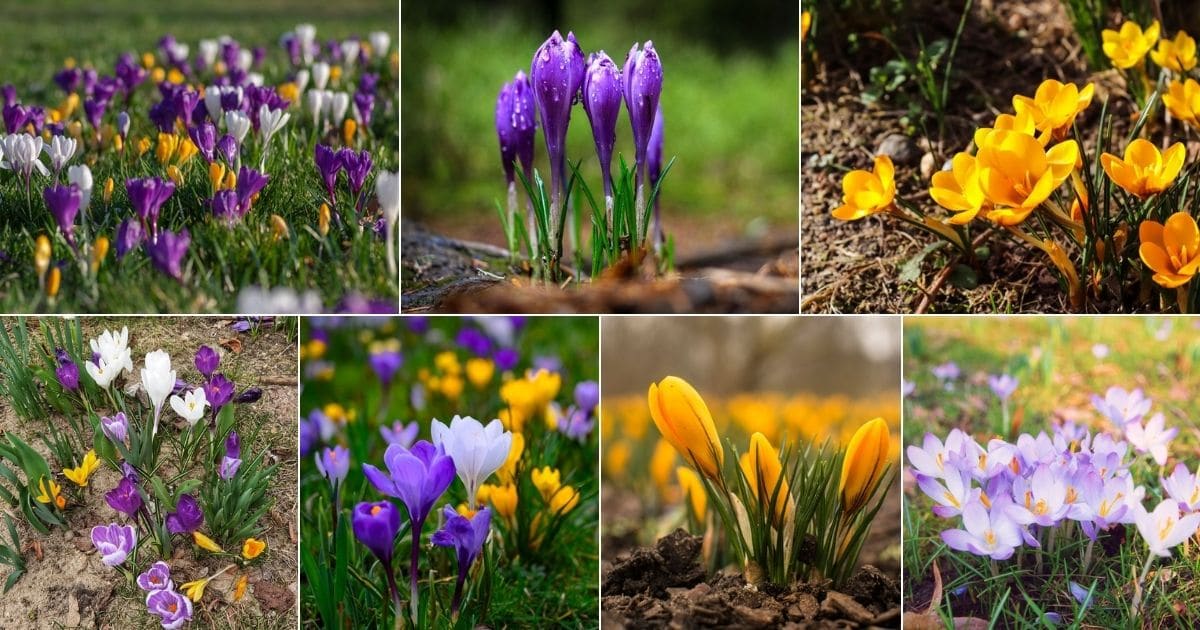
This in-depth guide will tell you all you need to know about planting and growing crocuses. We will go over ideal conditions, care instructions, and more. You can skip to the section you need in the table of contents below or read on for the entire guide.
Jump to:
- What Are Crocuses?
- Crocus Basics
- Where to Buy Crocuses
- Where Do Crocuses Grow?
- Why Grow Crocuses?
- Crocus Landscaping Ideas
- Recommended Crocus Varieties
- When Do Crocuses Bloom?
- How Long Do Crocuses Bloom?
- When to Plant Crocuses
- Ideal Growing Conditions for Crocuses
- How to Plant Crocuses
- How to Care for Crocuses
- How to Divide and Transplant Crocuses
- Recommended Planting Combinations for Crocus
- Frequently Asked Questions About Growing Crocuses
What Are Crocuses?
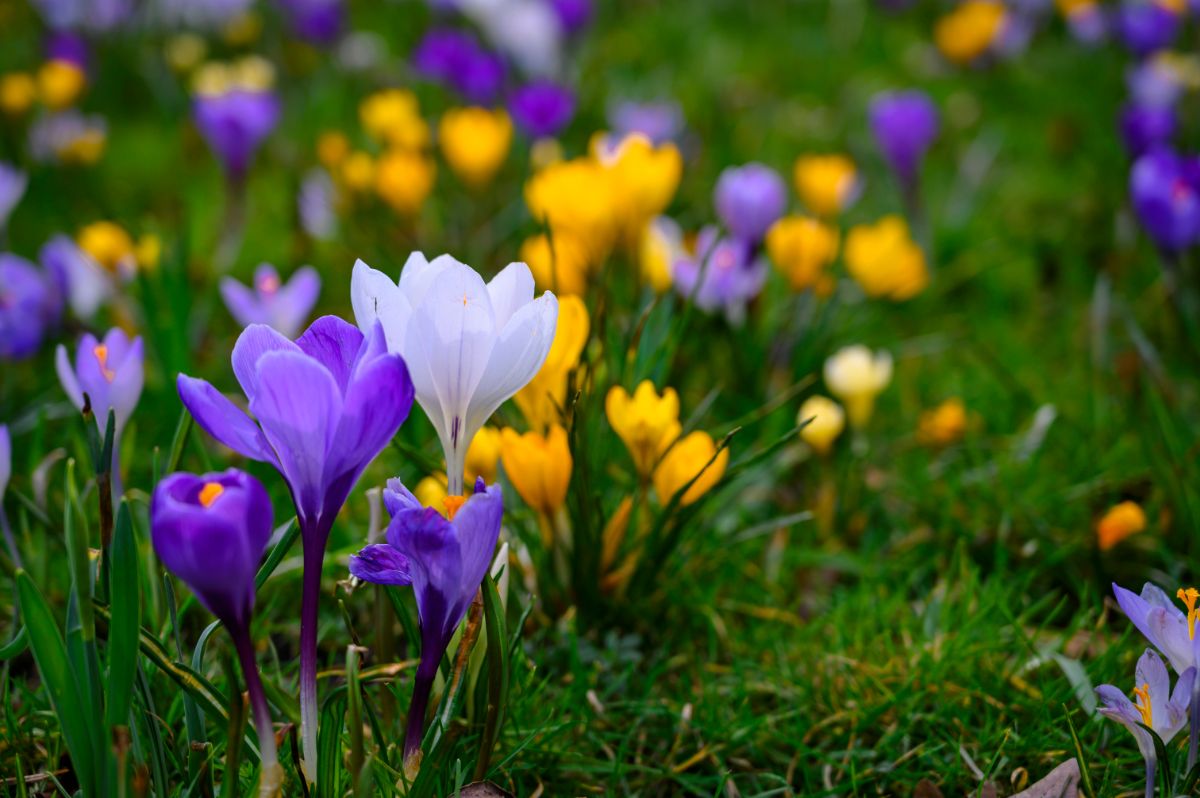
The name “crocus” references an entire genus of plants by the same name. Crocus falls under the Iridaceae family, better known as the Iris family. Within the genus are around 100 different plant species.
Generally speaking, crocus flowers are perennials, which means they bloom year after year. But if you live in a hot climate, it is possible that you will have to grow them as annuals.
One notable thing about crocus flowers is that they actually are where we get the spice saffron. Specifically, you can harvest saffron from Crocus sativus.
It is also useful to note that you grow crocuses from corms. Don’t know what a corm is? It is similar to a bulb or a tuber. There are, of course, some technical differences between these plant structures, but they are not important to know for the sake of growing crocuses. But at least now you will know what we are talking about when we refer to corms in this post.
Crocus Basics
| Zones | 3-8 |
| Blooming season | Winter through spring |
| Expected height | Up to 6 inches |
| Soil | Well-draining |
| Sun | Full to partial |
Where to Buy Crocuses
Want to bring the cheerful blooms of crocuses to your winter and spring perennial garden? To shop crocuses online now, click the link below.
Where Do Crocuses Grow?
Crocus flowers are native to quite a few regions, including North Africa, the Mediterranean, parts of Europe, Central Asia, the Middle East, and the Aegean islands.
Because crocus grows well in a wide range of climate conditions, it has been easy to cultivate in other locations globally as well.
Why Grow Crocuses?
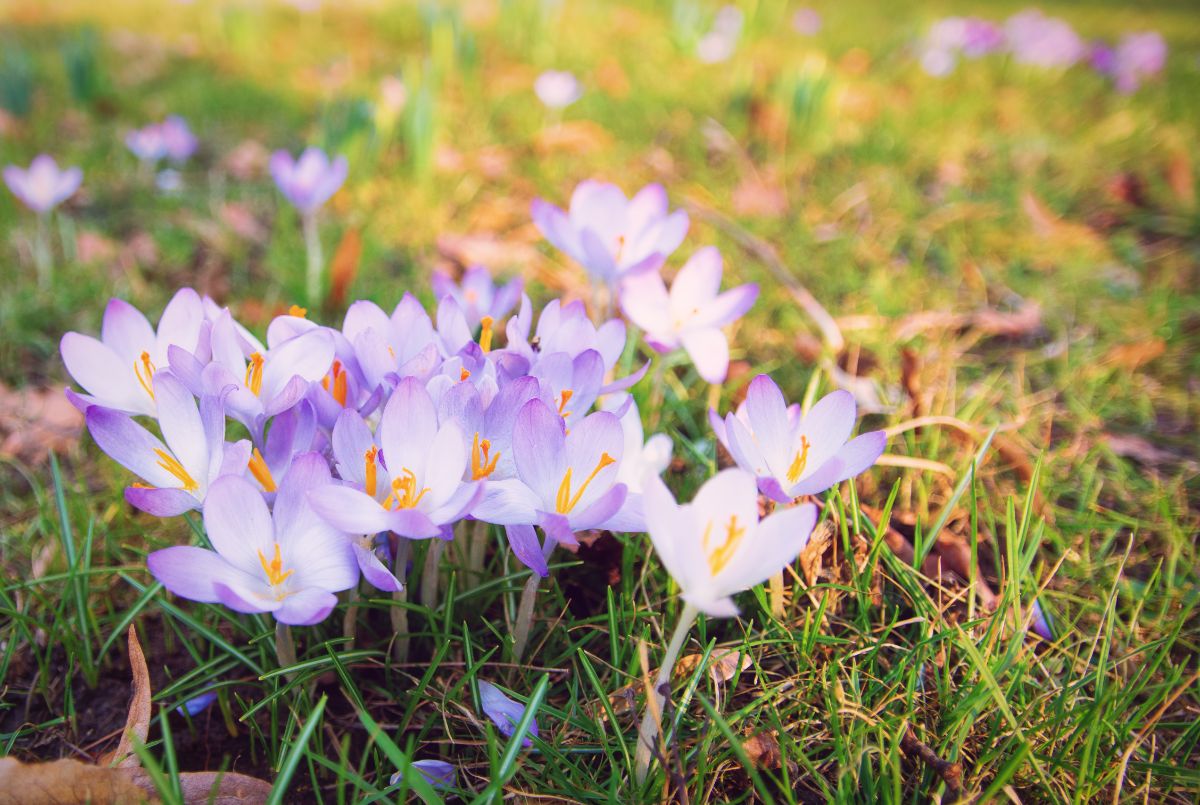
- Crocuses are a piece of cake to grow and care for. They are super low-maintenance, and an excellent perennial choice for beginning gardeners.
- These perennials are drought-tolerant, and require little manual watering.
- Crocus plants are a rabbit- and deer-resistant choice for your garden.
- Whatever your soil type, you can probably make it work for growing these winter hardy plants. You just have to make sure it drains.
- The fertilizer requirements of crocuses are quite minimal.
- It is not common for crocuses to succumb to insect infestations.
- During the early part of spring, it can be hard for pollinators to find flowers. If you plant crocuses, you will be providing them with a valuable food source at a time when they need it most.
- The white, yellow and purple petals of crocuses can bring cheer, color and warmth to your garden at a time when it would otherwise look stark and barren.
Crocus Landscaping Ideas
Here are a few possibilities for crocuses in your landscape:
- Create a carpet of crocus flowers. You can do this by planting them across a wide swath of your lawn.
- Make a spring pollinator garden. This could include crocuses mixed in with other winter and spring blooms like hellebores.
- Make a design in your lawn. Another fun way to use crocuses in your landscaping is to plant them so that they will forms shapes and designs in the grass when the flowers come into bloom.
- Use crocuses to line a path, or line them up along the edge of a hedge.
- Bring magnificent color to beds that would otherwise be barren in winter. Whether you choose lilac flowers, violet-mauve flowers, stunning bicolour blossoms, pale violet flowers, or those with a lighter base, you will love the effect in cold winters.
- If possible, try and plant your crocuses where at least some of them will be visible from your windows inside your home. That way, you can enjoy your winter and spring-blooming crocuses even when you are staying warm indoors.
Whatever you do, Almanac suggests, “Plant bulbs in groups or clusters rather than spacing them in a single line along a walkway or border. Single flowers get lost in the landscape. Plant a few inches apart, and plant in groups of 10 ormore.”
That does not mean you cannot make lines with crocuses. In fact, they are rather good for lines. You just need to go a few flowers deep with the thickness of the lines.
Recommended Crocus Varieties
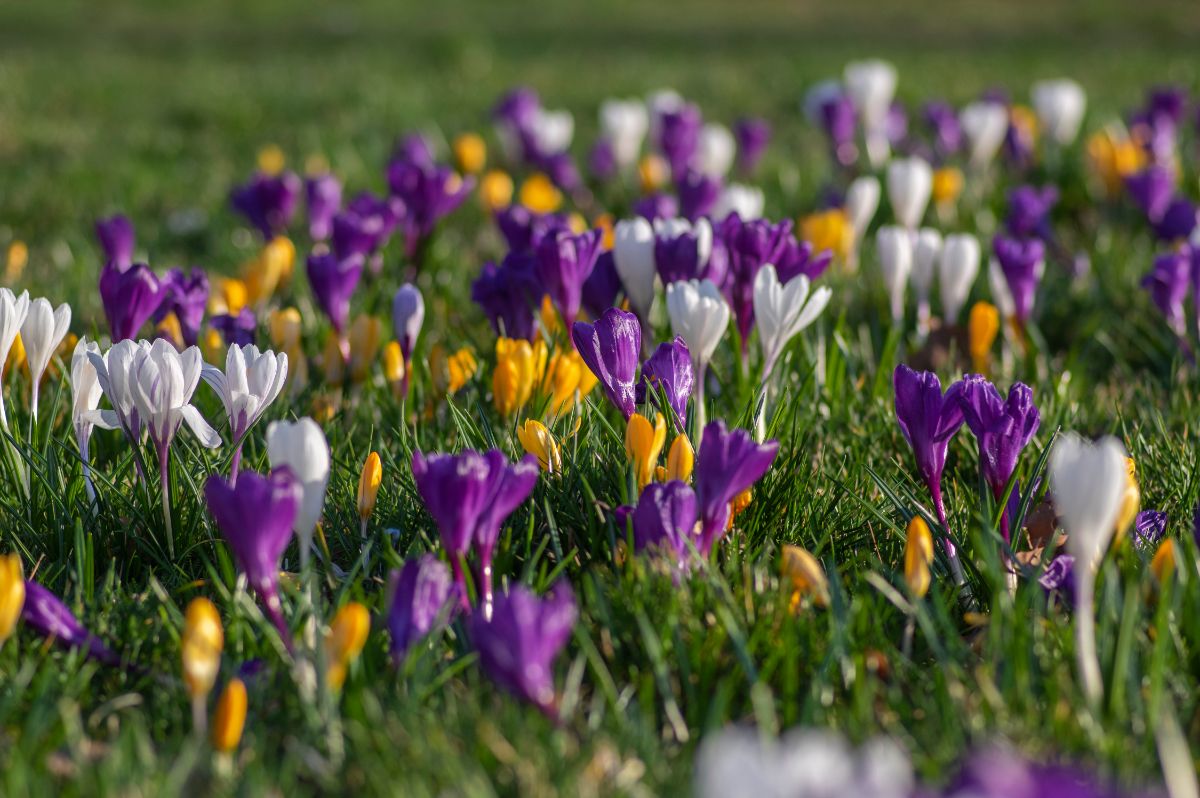
There are quite a few beautiful crocus varieties and cultivars you can plant in your garden. Here are a few recommendations in a variety of colors:
- Jeanne d’Arc: For bright white flowers that match the winter snow, consider planting this cultivar. If you are trying to populate a lawn with thick grass with crocus plants, “Jeanne d’Arc” can flourish nicely.
- Violet Queen: This cultivar produces purple flowers with yellow centers. While we have seen the color described as “deep violet,” it is more of a light to medium lavender.
- Crocus sativus: Grow this type of crocus if you fancy the idea of producing saffron. That being said, for a single gram of saffron, you would require over 150 blooms. If you wanted a pound of saffron, you would have to grow 75,000 flowers! Naturally, this is not an efficient way to restock your spice cabinet—and you can understand now why saffron is such an expensive spice. Still, it can be fun just knowing you have them in your yard. You will also love their beautiful purple hue.
- Barr’s Purple: For a lovely purple bloom color, consider this cultivar. The petals open in the shape of a bowl.
- Snow Crocus: For flowers in a light shade of lavender, consider planting “Snow Crocuses.” They have a delicate and ethereal appearance, and will complement the snow nicely.
- Blue Pearl: Another type of crocus that likewise has a soft, luminous appearance is the “Blue Pearl” cultivar. The petals are white with hints of a pale bluish-purplish hue.
- Pickwick: Want something truly eye-catching? These large blossoms will bring cheer to your garden with their white and dark lilac stripes.
- Firefly: The golden throats and light purple petals of these stunning flowers will bring a colorful glow to a snowy landscape.
- Zenith: If you like the Blue Pearl cultivar of crocus, you will also love the “Zenith” crocus blossoms with their shades of white and blue. Indeed, the colors may remind you of high clouds in a wintry blue sky.
- Flower Record: For bold purple splashes of color in your garden, try planting these gorgeous blossoms.
- Grand Maitre: Another option for flowers sporting a deeper shade of medium purple is the “Grand Maitre” crocus. The big flowers will have a dramatic effect in your lawn or along your pathways.
- Orange Monarch: The orange color of “Orange Monarch” will bring a fiery, warm hue to your flower beds.
- Tricolor: As suggested by the name, there are several different hues in this cultivar. That said, they form a gentle gradient with yellow in the middle, then white, then violet blue toward the edges.
- Yellow Mammoth: Golden-yellow throats not enough to satisfy your desire for sunny hues in your garden during the colder months of the year? For stunning golden yellow flowers through-and-through, choose this exquisite cultivar.
- Gipsy Girl: Another option for a yellow crocus is the “Gipsy Girl.” The petal interiors are yellow, but the outer petals feature dark brown stripes in a vivid contrast. The undeniable beauty of these blossoms will be one of the most striking features of your garden when they are in bloom.
- Romance: This type of cultivar also features yellow petals. The gorgeous flowers are only several inches tall.
- Zwanenburg Bronze: One of the most magnificent shades is the bronzy gold hue of this intriguing cultivar of crocus.
- Cream Beauty: If you cannot decide between yellow and white petals, the perfect middle ground may be the creamy petals of this lovely crocus cultivar.
- Advance: The petals of this cultivar feature bits of yellow, cream and purple. They are named “Advance” as a reference to how early they blossom. If you just cannot wait for winter to end, this is the cultivar to get in advance of the arrival of spring.
- Ard Schenk: One more option for white crocuses with yellow centers is this beautiful cultivar. They will bring cheerful hues to your garden when they blossom.
When Do Crocuses Bloom?
We have seen bloom times for crocus flowers as early as January and as late as April.
How Long Do Crocuses Bloom?
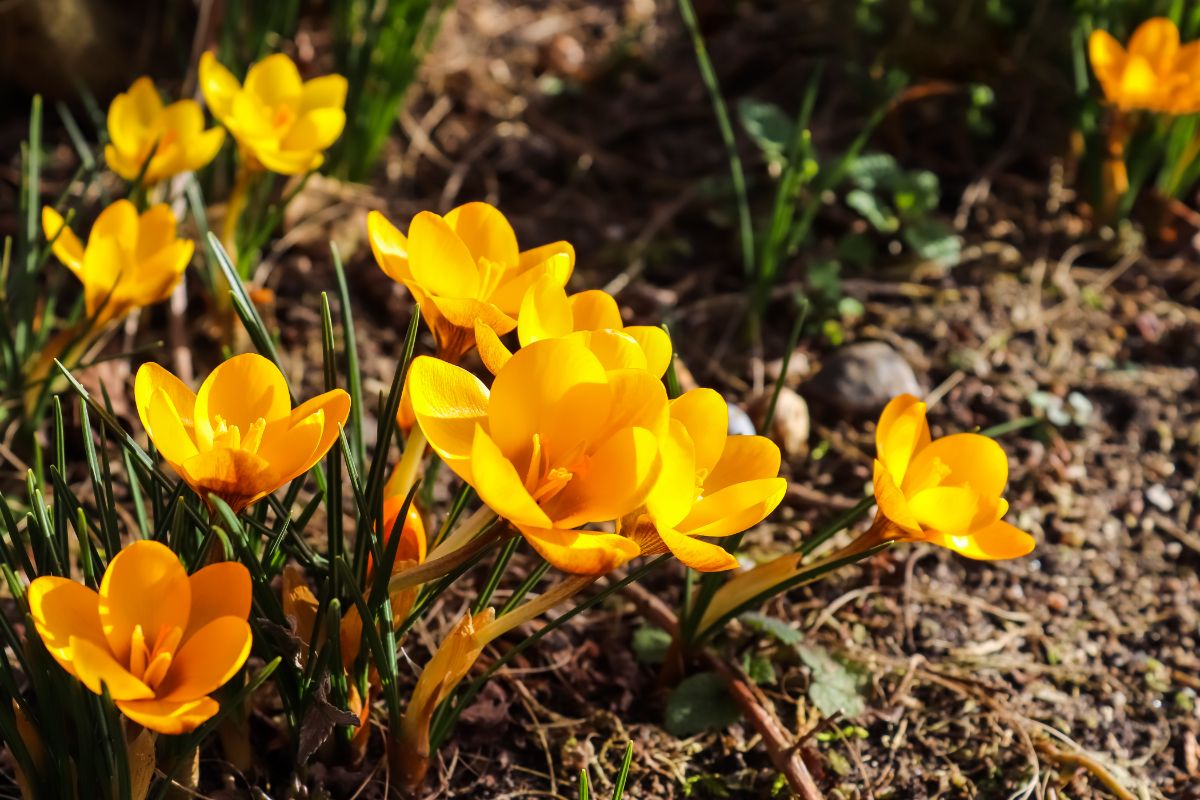
Any particular crocus plant you grow may blossom for between 2-5 weeks, depending on the cultivar.
If you want to maximize the timeframe during which you can enjoy crocuses in your winter garden, try growing a few different varieties. That way, you can extend the bloom time for a few months, rather than just a few weeks.
When to Plant Crocuses
You need to plant crocuses in the autumn so that they are exposed to cold. If you fail to do this, you will not get blossoms.
Mark the date on your calendar when you can expect the first hard frost. Then, go back 6-8 weeks to find your ideal planting date. It could be as early as September or as late as November, depending on where you live.
The temperature of the soil should not be above 60 degrees Fahrenheit.
Ideal Growing Conditions for Crocuses
Growing crocus flowers successfully requires the right conditions for sunlight, soil, and watering. Let’s go over all three.
How Much Sun Do Crocuses Need?
Crocus plants can flourish nicely with plenty of sunlight, which is why they can do well in your lawns. But they will be happy in partial shade in other areas of your garden as well.
What Type of Soil is Right for Crocuses?
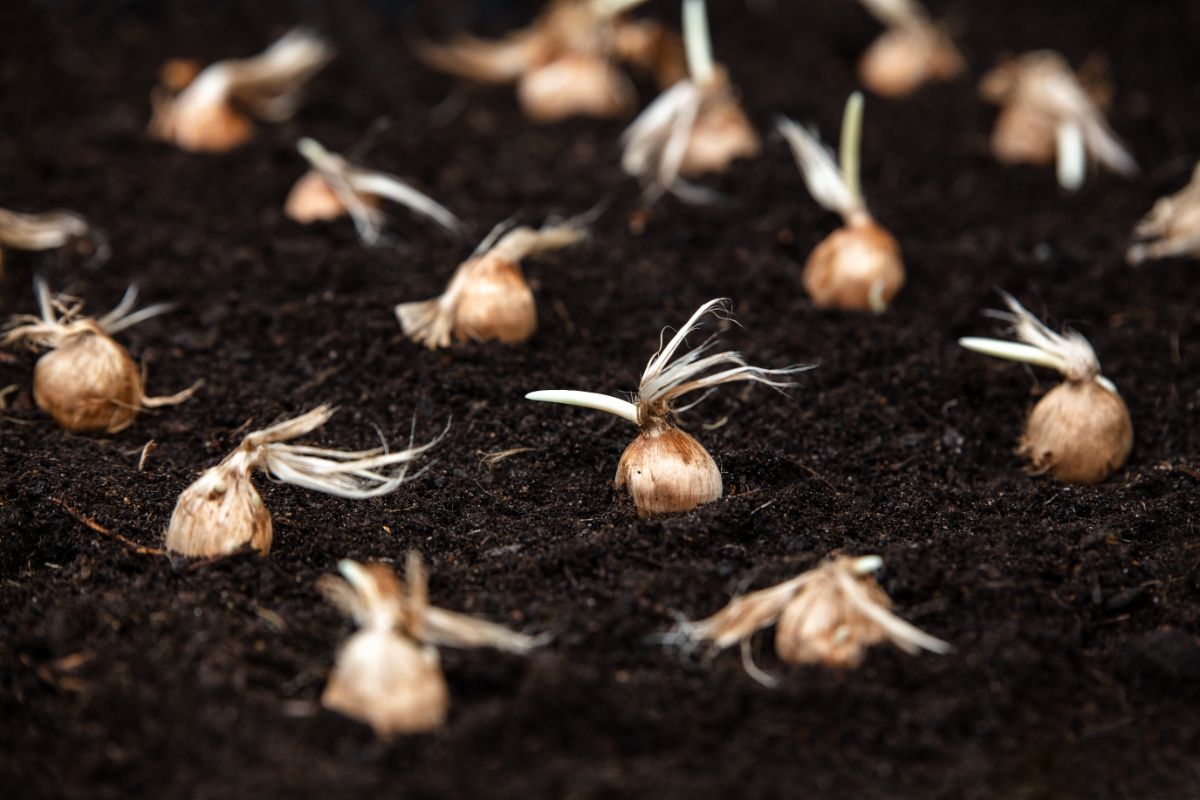
Rich, well-draining soil is perfect for crocuses.
The pH of your soil can range between acidic and alkaline, but the crocus plants will be happier if the pH leans toward alkaline.
We cannot emphasize enough that crocuses need well-drained soil. The corms are extremely prone to rot, so it does not take much standing water at all to destroy them.
Beyond that, crocuses are pretty flexible. So, regardless of your soil conditions, they should grow fine. Just avoid compacted or soggy soil.
How Much Water Do Crocuses Need?
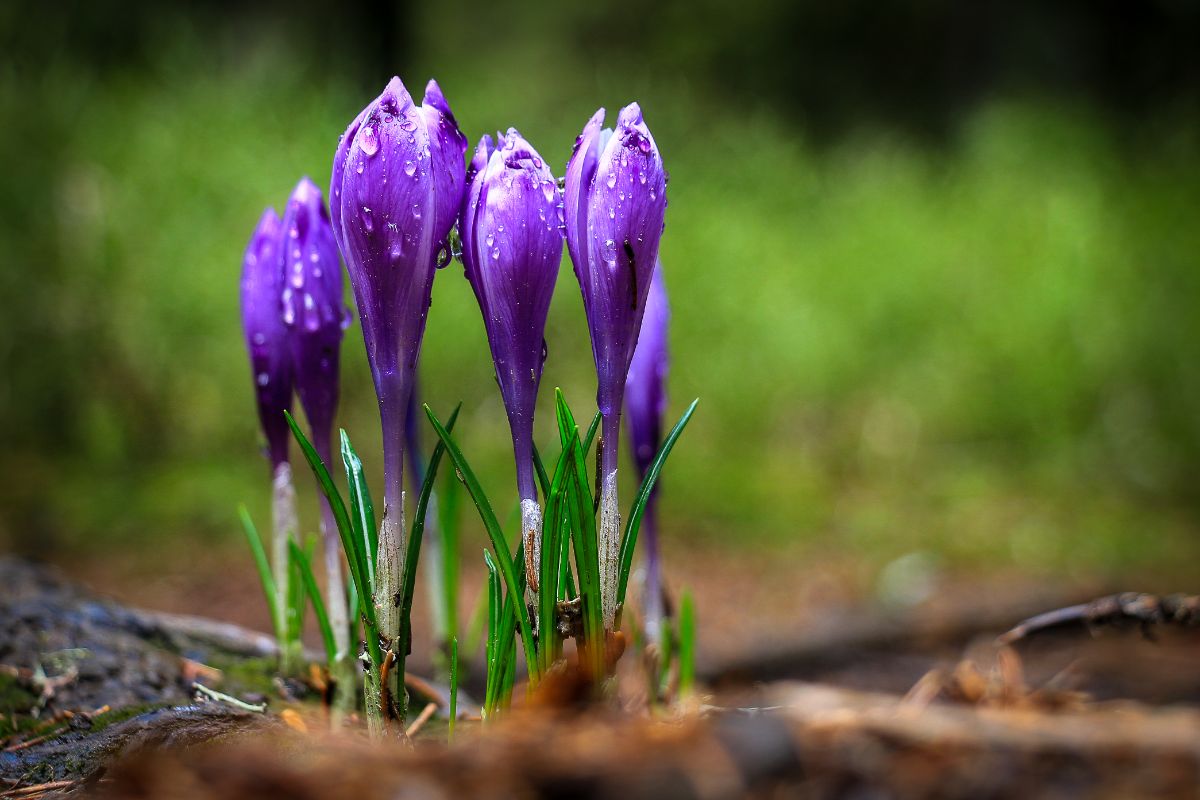
If you want to kick back and not have to worry about watering your flowers, you are going to love crocuses!
Basically, crocuses need next to no attention from you under normal conditions while in bloom. If it doesn’t rain for 3-5 days, then yes, you need to water them. But otherwise, you can just let Mother Nature take care of them!
Crocus plants go dormant each year for the winter. During that time, you do not have to water them at all.
How to Plant Crocuses

You probably are going to plant your crocuses from corms. It is possible to start them from seed, but this is not a common approach.
Container Planting
It is easy to grow crocuses in containers. Here is how:
- Choose a container that drains well and is fairly deep. Put holes in if necessary.
- Fill the containers with appropriate potting mix.
- Dig holes for the crocus corms that are around 3-4 inches deep. With the pointed end facing upward, insert them into the potting mix, and then backfill it.
- Water deeply after planting.
Normally, this is the point in our instructions when we would say, “Keep watering your plants extra while they are establishing.” But it is different for crocuses. After the initial watering, you do not need to do anything. They will be fine until they start blooming.
- Find a spot to put the crocus pots. Anywhere they are receiving full or partial sun should be good.
One thing you should note about crocuses in containers, however, is that keeping them alive can be challenging in some situations.
The reason is that there is not as much insulation from the soil as your plants would get in your garden beds. So, temperature spikes have more of an impact.
See the FAQ for some information about overwintering your potted crocuses.
Ground Planting
Follow the instructions below to plant crocuses in your garden beds:
- Choose an appropriate location where your crocuses will be in full sun or partial shade.
- Prepare the soil if necessary by adding peat, manure or bark. Doing this will accomplish two things: it will provide extra nutrition and it will increase the drainage.
We cannot say enough times that you need to ensure adequate drainage! This is important for most plants, but with crocus it is absolutely vital if you want your plants to live.
- Dig holes for your crocus corms. Each of the corms should go 3-4 inches down. Make sure that you are orienting them with the pointed end facing upward.
Why is it important to provide this extra depth? The reason is that if the corms are too close to the surface, temperature fluctuations will harm them.
In terms of spacing, each of your crocuses will need around 3 inches separation from the rest.
- Backfill the soil and water well.
As discussed above, no further watering is needed at this point!
Starting Crocuses from Seed

If you are patient and curious, you can grow crocuses from seeds. Just do not expect this method to result in first-year flowering plants.
- Harvest the seeds from your existing plants, if you have them. You can collect them in May or June.
- Get a compost mix ready with some grit on top.
- Place the seeds on the surface of the compost/grit.
- Use a spray bottle to dampen the surface.
- At this point, you may also want to use the spray bottle to apply copper fungicide.
- Find a spot for the seeds to germinate. It should not be heated.
- Keep an eye on your seeds, and make sure that the compost/grit does not dry out. Add more water as necessary with the spray bottle.
You should not cover the seeds with plastic wrap or the like to contain moisture, because it will disrupt the airflow too much. These seed are easily susceptible to fungal infections, thus the suggestion about the fungicide.
You will need to be patient, because the minimum time for germination is around a month. At the outside, it can be half a year.
- As your seedlings grow, keep monitoring them. Water when needed, but do not let them get wet feet.
- Fertilize them now and again, but not with anything too strong.
- It will take several years before you can transfer the seedlings out into your garden beds. Each year, you will have to replace the compost and grit.
So, it is quite an involved process. Therefore, the only reasons to do it are 1-interest, and 2-to save money on new crocuses. If you do not care about either, just stick with the regular corms.
How to Care for Crocuses
You are ready to plant crocus flowers now. But how do you maintain them? You will love how easy and non-fussy they are! Let’s go over fertilization requirements, mulching, pruning and more.
How to Fertilize Crocuses
There are two times of year that are ideal for applying bulb fertilizer: autumn and spring. As the plants are developing their roots in autumn, they will appreciate a nutritional boost. In spring, just look for the development of new foliage to get the timing right.
You do not need to go overboard with fertilizer. The needs of this perennial are minimal in this department.
How to Mulch Crocuses
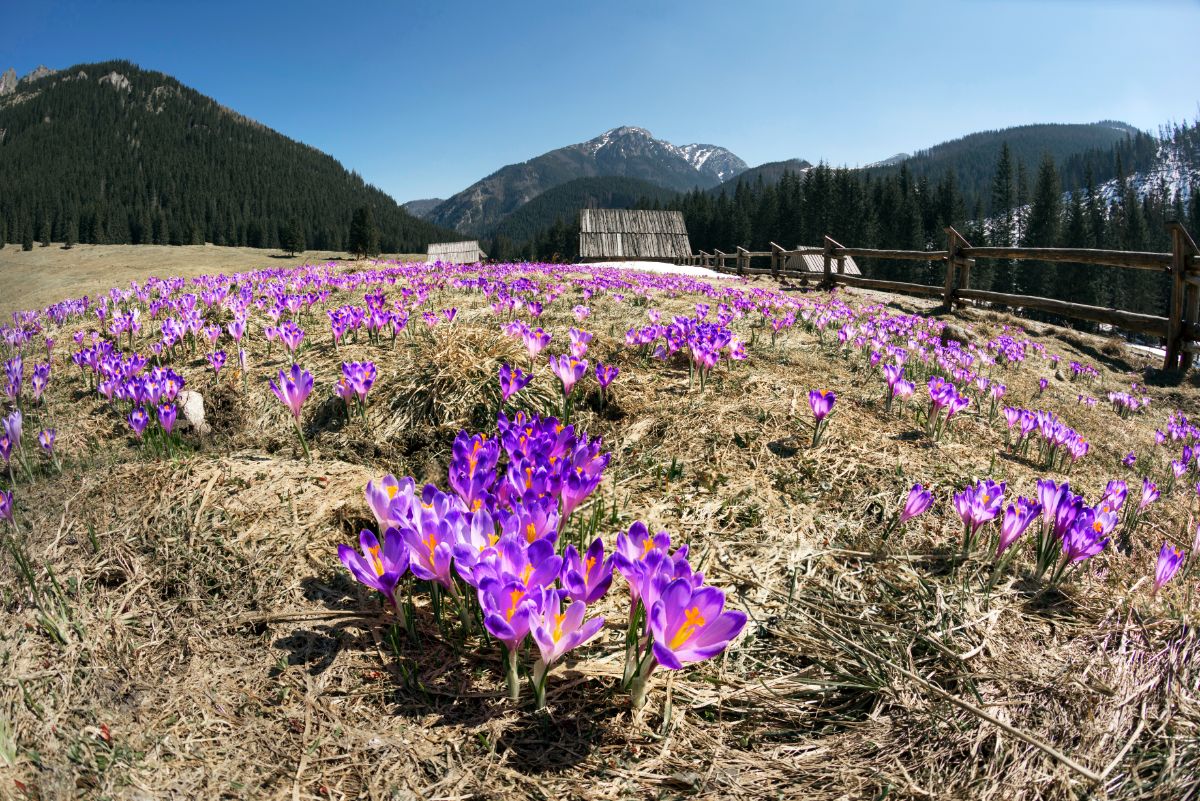
John Scheepers offers fairly specific advice about mulching crocuses, saying, “If your garden is in a horticultural zone that is either too cold or only marginally suitable, you may want to apply no more than a 2" layer of mulch after the ground surface freezes in the fall. The mulch should trap the cold temperatures into the soil, not warm temperatures. Mulch helps to protect the bulbs from arctic temperature spikes over the winter.”
The site continues, “Good mulching mediums include straw, salt marsh hay or oak leaves. In the spring, you can loosen the mulch in the area in which the Crocus will be sprouting. (Mulching lawn installations is not necessary or recommended.) Crocus normally survive late spring snow storms, so no worries.”
How to Stake Crocuses
Crocuses are really short plants, coming in at around 6 inches in height at the maximum (many are even shorter than that).
That means that you do not have to worry about them flopping over, even with harsh winter weather. Hurray for easy maintenance!
How to Prune Crocuses
Let’s talk about what you need to know about pruning crocuses, including instructions for deadheading and cutting them back.
How to Deadhead Crocuses
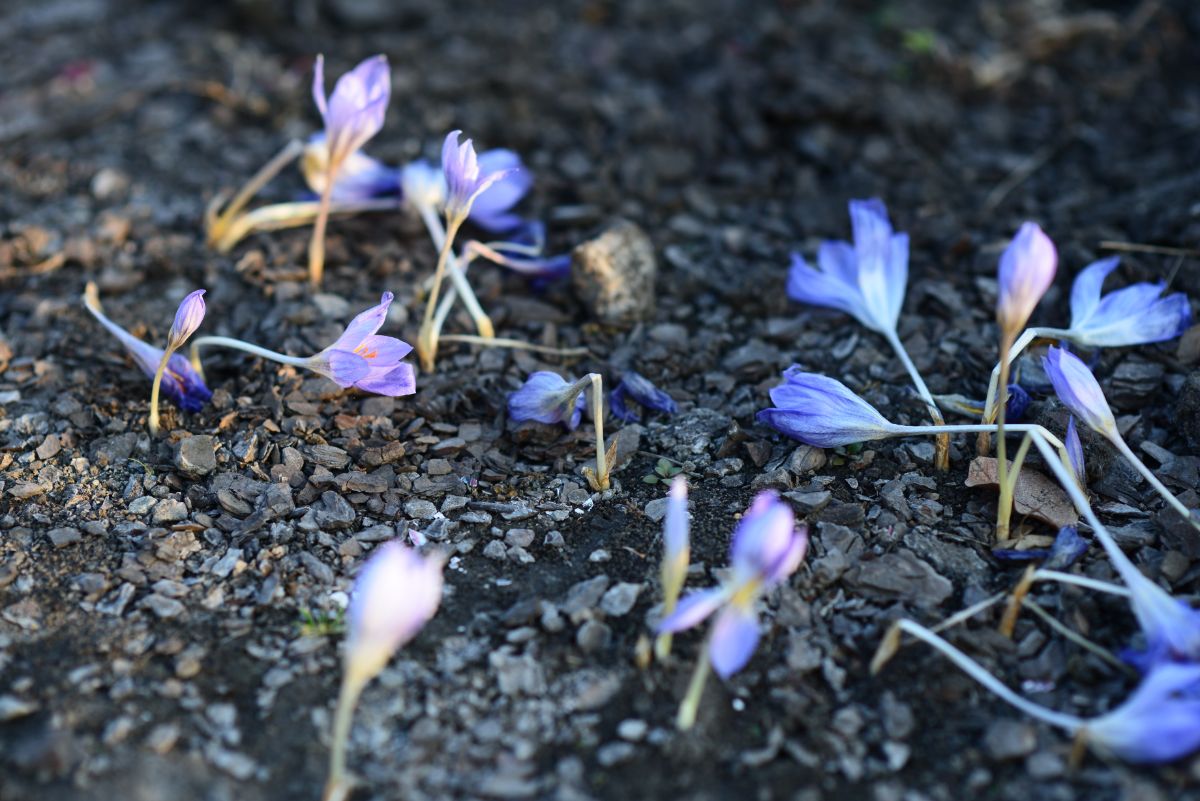
Guess what—you do not need to deadhead crocuses! One less thing to do, right? That said, you can do it if you want, just to make your wilted crocuses look a bit nicer.
When to Cut Back Crocuses
You are going to be so tempted to trim your crocuses right after their blooms wilt. But Chicago Tribune says you should not do this.
The article quotes Doris Taylor, Plant Clinic manager at The Morton Arboretum in Lisle, as explaining, “Perennial bulb plants need to keep their leaves after they bloom to collect energy from sunlight. This is the time of year when they're developing the flowers for next spring in their bulbs underground. They need all the energy they can get."
That means if you cut them back too soon after their blossoms fade, you could make it harder for them to produce fresh blooms next year.
So, when is the right time to cut them back? Eventually, their leaves will finish doing their job for the year. Then they will turn brown and wilt. You are then free to trim them back.
How to Divide and Transplant Crocuses
Every five years or so, crocuses need to be divided. Here are the steps:
- When you see the foliage dying, it is an appropriate time to proceed with division. Begin by digging down around the crocus in a circle with a spade. Make sure that you are not cutting down into the roots or the corms.
After you get deep enough, you need to press the spade under the plant and push upward to lift it up out of the soil.
- Look for the new corms, which are called “offsets.” Divide them from the main corm.
- Pick new locations for your offsets and plant them. Follow the general instructions we provided for ground planting earlier in this post.
- As usual, water well once you have backfilled the soil.
Keeping up with dividing and transplanting every few years will ensure your crocus plants continue to bloom beautifully.
Are Crocuses Vulnerable to Diseases or Pests?
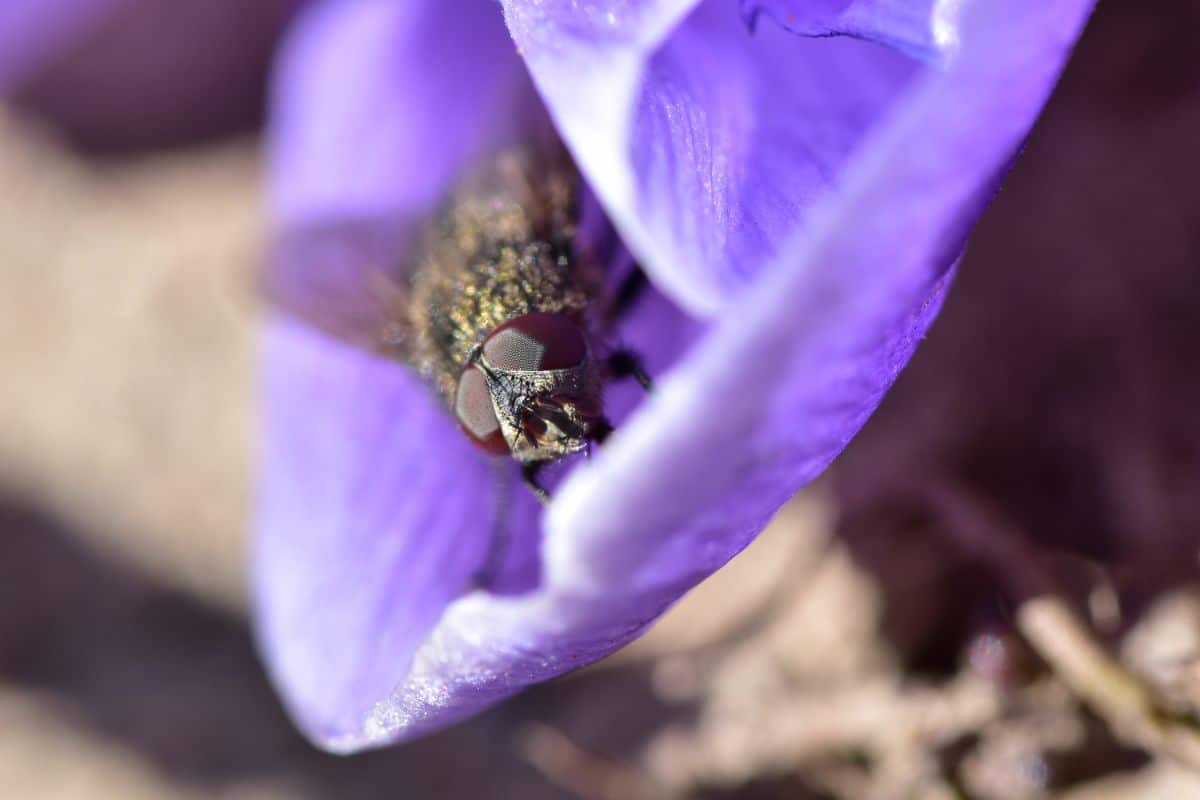
Just like any other plant type, crocuses may sometimes become diseased or fall under attack by pests. Let’s talk about some common issues you might encounter.
The most likely potential source of disease for crocuses is fungal infections. These might come about in any of the following situations:
- If plants are too close together, they might not be getting enough airflow. That can lead to a build-up of moisture, which in turn might cause fungal infections to bloom.
- If the weather is wet when the flowers blossom, this can also sometimes lead to fungal infections setting in.
- If the soil becomes waterlogged, the root can get too wet. It may then rot. Keep crocuses out of soggy soil.
Having discussed the dangers of waterlogged soil, next, we need to discuss pests. Slugs and snails may sometimes eat your crocuses. Aphids also may infest them. But thankfully, these do not tend to be major issues.
What can be, alas, is mammals. Squirrels, voles, mice, and other small critters are fond of devouring crocus corms.
Your corms will be most susceptible to this right after you plant them. So, keep a watchful eye on them in the weeks that follow.
Recommended Planting Combinations for Crocus
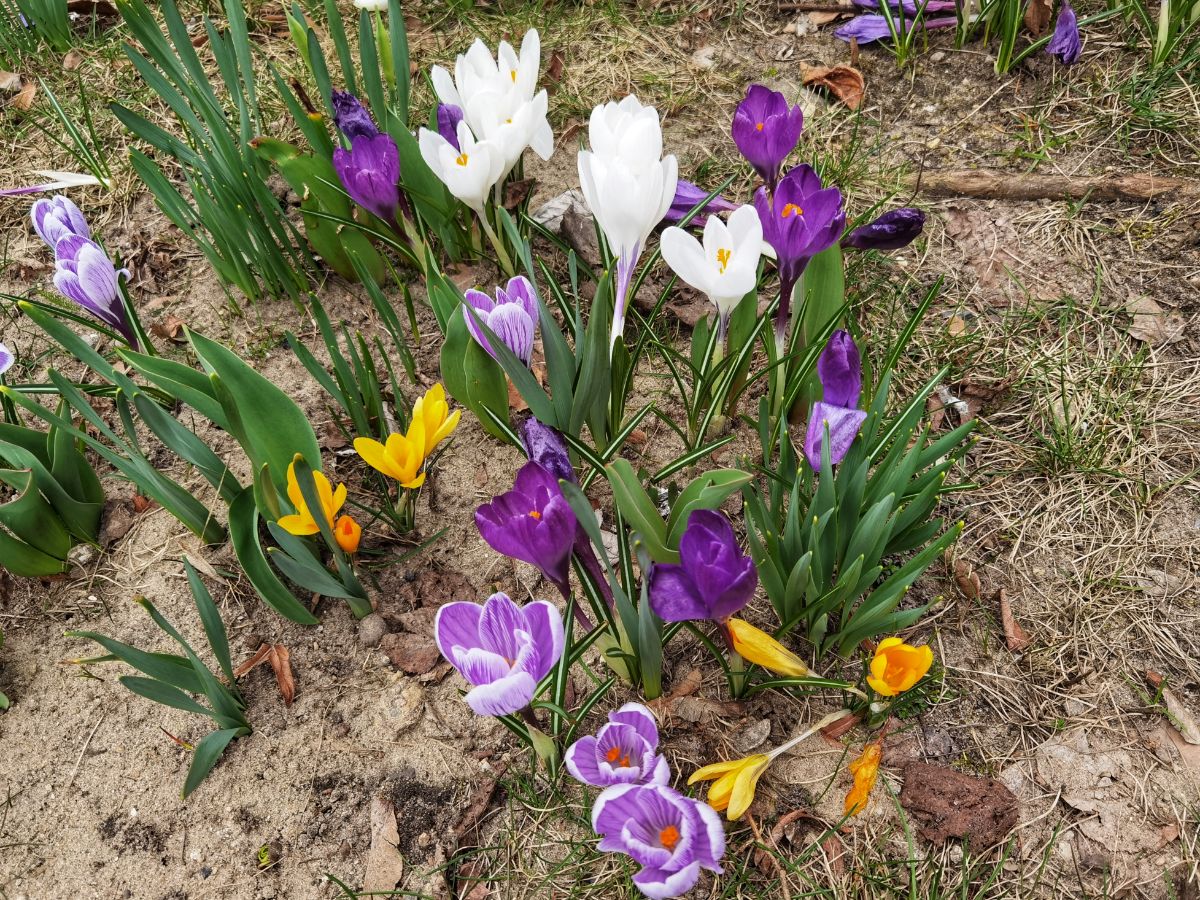
Here are a few ideas for plants that can go well with crocuses:
- Hellebores: These beautiful perennials come in a range of different colors, and blossom during the spring and winter months. They reach up to 2 feet in height, and can tolerate anything from full sun through full shade.
- Daffodils: There are some cultivars of daffodils that in certain locations may bloom as early as February. So, they can make a nice choice to go with your crocuses. Plant yellow crocuses with daffodils for matching hues, or contrast purple crocuses with daffodils for a different look.
- Snowdrops: These winter flowers may blossom between October and April, with exact bloom times dependent on your climate zone. They look lovely interspersed with crocus flowers.
- Calicarpa: What makes this shrub ornamental are its vivid purple berries. During fall and winter, they can beautify your winter garden. They also may help draw attention to the purple blossoms of some types of crocus flowers.
There are lots of other plants that look nice alongside crocuses, so research to come up with additional ideas!
Frequently Asked Questions About Growing Crocuses
In the majority of cases, mammals are responsible for eating crocuses, but sometimes it could be slugs, snails or insects.
Alas, if squirrels are getting at your crocuses, you are not alone. This problem can also occur with voles. The simplest answer in both cases is to protect them with chicken wire.
It could be a couple of things. One possibility is that it is time to divide your crocuses and transplant them. Another possibility is that your grass may simply be too thick for your crocuses to thrive. In that case, again, relocating the crocuses could help.
They might not be. Dutch Grown says, “Unfortunately containers can’t protect bulbs as well as mother earth can, so when you live in hardiness zones 3-7 it might be better to let your containers spend the winter indoors, in a cool, dark, well-aired spot that won’t get warmer than 60 degrees Fahrenheit, like an unheated basement or garage.”
Yes, you can. Here are the basic steps:
1. Put your crocus corms in pots in October.
2. Find a cool environment in the approximate range of 38 degrees Fahrenheit to 45 degrees Fahrenheit to put the potted corms for 8-10 weeks.
3. During the time when you are chilling the crocus corms, water them as needed.
4. Move them into a more temperate environment. As you do, expose them to some sunlight.
5. Increase the amount of sunlight as time goes on. Continue providing around the same amount of water you did while chilling the corms.
Within four weeks, you should have flowering.
Alas, the downside of forcing crocus corms is that you have to treat them as annuals. The corms will not produce new flowers next year.
Crocus flowers are perennials that bloom every year in the winter and spring. So, an investment in crocus corms will pay off for years to come.

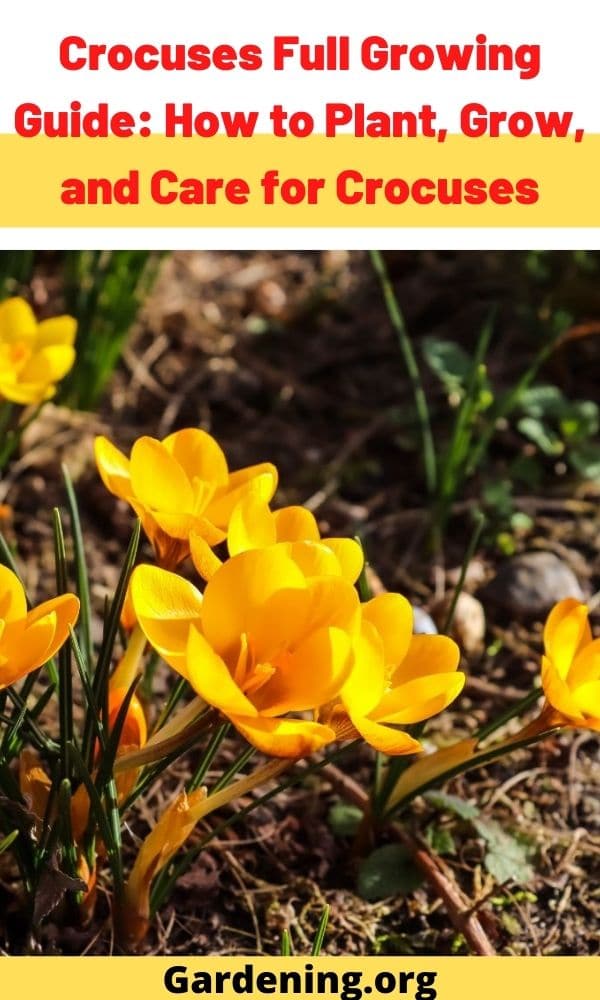
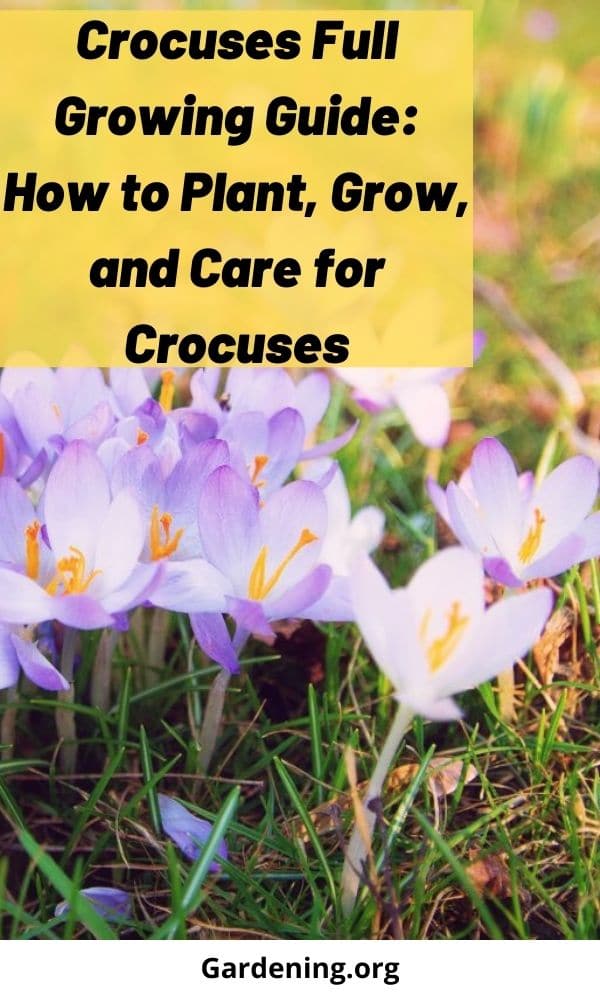
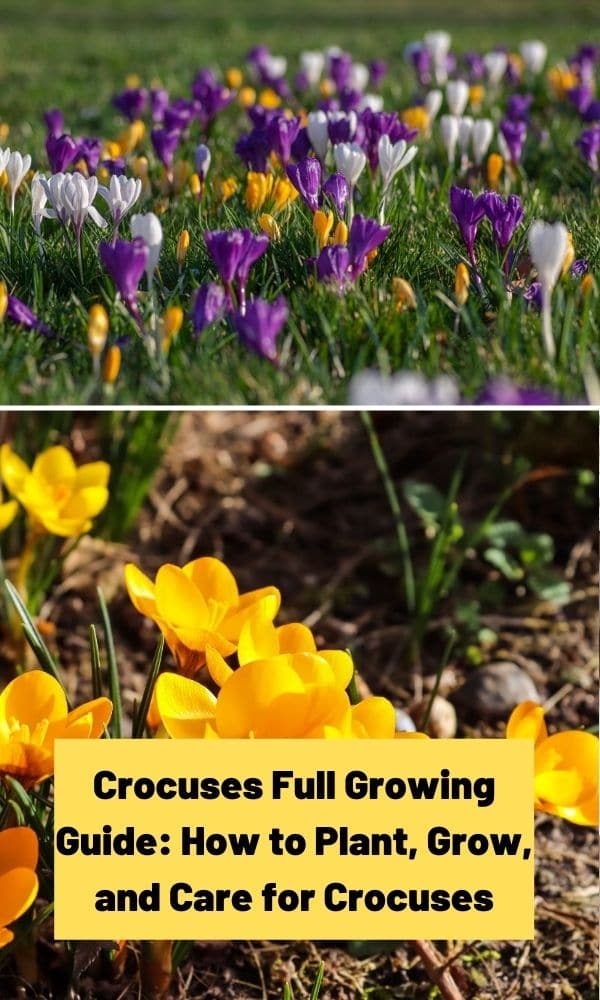







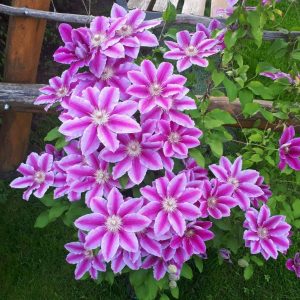
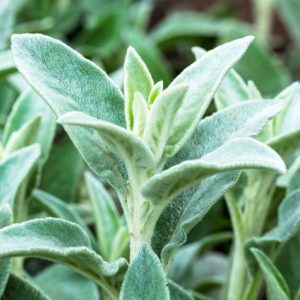


Leave a Reply